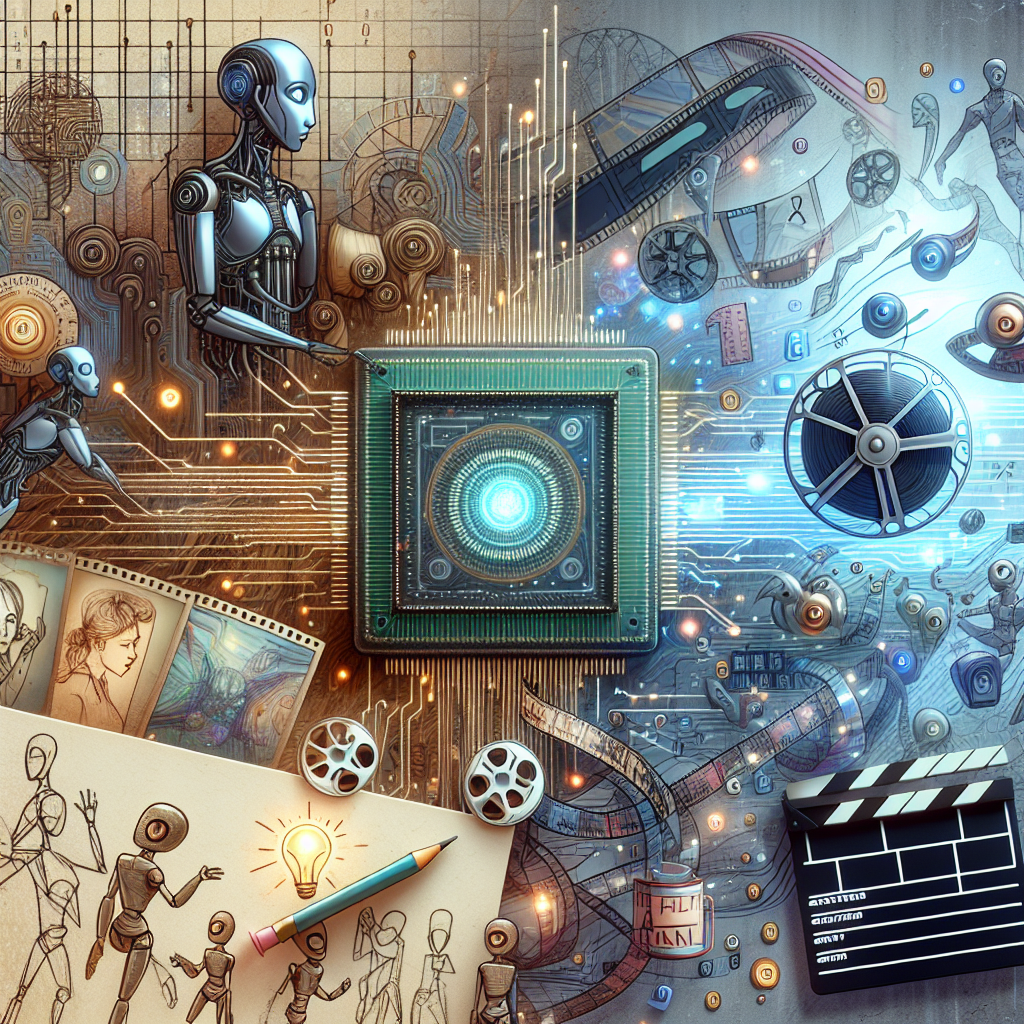Generative artificial intelligence, or generative AI, is a rapidly evolving technology that has had a profound impact on the animation and visual effects industry. This innovative tool has opened up new possibilities for creating stunning visual content, transforming the way animators and visual effects artists work. In this article, we will explore the role of generative AI in animation and visual effects, discussing its benefits, challenges, and future potential.
Generative AI refers to a type of artificial intelligence that is capable of generating new content, such as images, videos, and animations, based on a set of input data. This technology has been used in a variety of creative fields, including music composition, image editing, and even video game development. In the animation and visual effects industry, generative AI has proven to be a game-changer, enabling artists to create complex and realistic visuals in a fraction of the time it would take using traditional methods.
One of the key ways in which generative AI is being used in animation and visual effects is through the creation of procedural animation. Procedural animation involves using algorithms to generate movement and behavior for characters and objects in a scene. This can range from simple tasks like animating a character walking or running, to more complex actions like simulating realistic cloth physics or fluid dynamics. Generative AI algorithms can be trained on large datasets of motion capture data or simulated physics simulations, allowing them to learn how to generate lifelike animations automatically.
Another application of generative AI in animation and visual effects is in the creation of visual effects elements, such as smoke, fire, and explosions. Traditionally, these effects would have to be painstakingly hand-animated or simulated using complex physics simulations. With generative AI, however, artists can now generate these effects procedurally, saving time and resources while still achieving realistic results. This technology has been used in blockbuster films like “Avengers: Endgame” and “The Lion King” to create stunning visual effects that would have been difficult, if not impossible, to achieve using traditional methods.
Generative AI has also been used to enhance the creative process for animators and visual effects artists. By automating repetitive tasks like rigging characters or setting up lighting and camera angles, generative AI allows artists to focus more on the creative aspects of their work. This not only speeds up the production process but also enables artists to experiment with new ideas and techniques that they may not have had the time or resources to explore before.
Despite its many benefits, generative AI also presents challenges for the animation and visual effects industry. One of the main concerns is the potential loss of creative control, as generative AI algorithms can sometimes produce unexpected or undesirable results. Artists must strike a balance between letting the AI generate content automatically and manually intervening to ensure the final product meets their artistic vision. Additionally, there are ethical considerations to take into account, such as the potential for generative AI to perpetuate stereotypes or biases present in the training data.
Looking ahead, the future of generative AI in animation and visual effects looks promising. As the technology continues to advance, we can expect to see even more sophisticated and realistic animations and visual effects created with the help of generative AI. Artists will have access to powerful tools that enable them to push the boundaries of their creativity and bring their visions to life in ways that were previously unimaginable.
In conclusion, generative AI is revolutionizing the animation and visual effects industry, offering artists new opportunities to create stunning visuals in less time and with greater efficiency. While there are challenges to overcome, the potential of generative AI to transform the way we create and experience animation and visual effects is undeniable. With continued innovation and collaboration between artists and AI researchers, we can expect to see even more exciting developments in the field of generative AI in the years to come.
FAQs:
Q: How does generative AI differ from traditional animation techniques?
A: Traditional animation techniques involve manually creating each frame of an animation, while generative AI uses algorithms to generate animations automatically based on input data.
Q: Can generative AI be used to create original character designs?
A: Yes, generative AI can be used to generate original character designs based on a set of input parameters, such as body proportions, facial features, and clothing styles.
Q: What are some examples of generative AI being used in popular films?
A: Generative AI has been used in films like “Avengers: Endgame” and “The Lion King” to create realistic visual effects elements, such as smoke, fire, and explosions.
Q: Are there any ethical considerations to take into account when using generative AI in animation and visual effects?
A: Yes, there are ethical considerations to consider, such as the potential for generative AI to perpetuate stereotypes or biases present in the training data. Artists must be mindful of these issues and take steps to mitigate them.
Q: How do artists balance creative control with the use of generative AI?
A: Artists must strike a balance between letting the AI generate content automatically and manually intervening to ensure the final product meets their artistic vision. This involves experimenting with different levels of automation and intervention to achieve the desired results.

